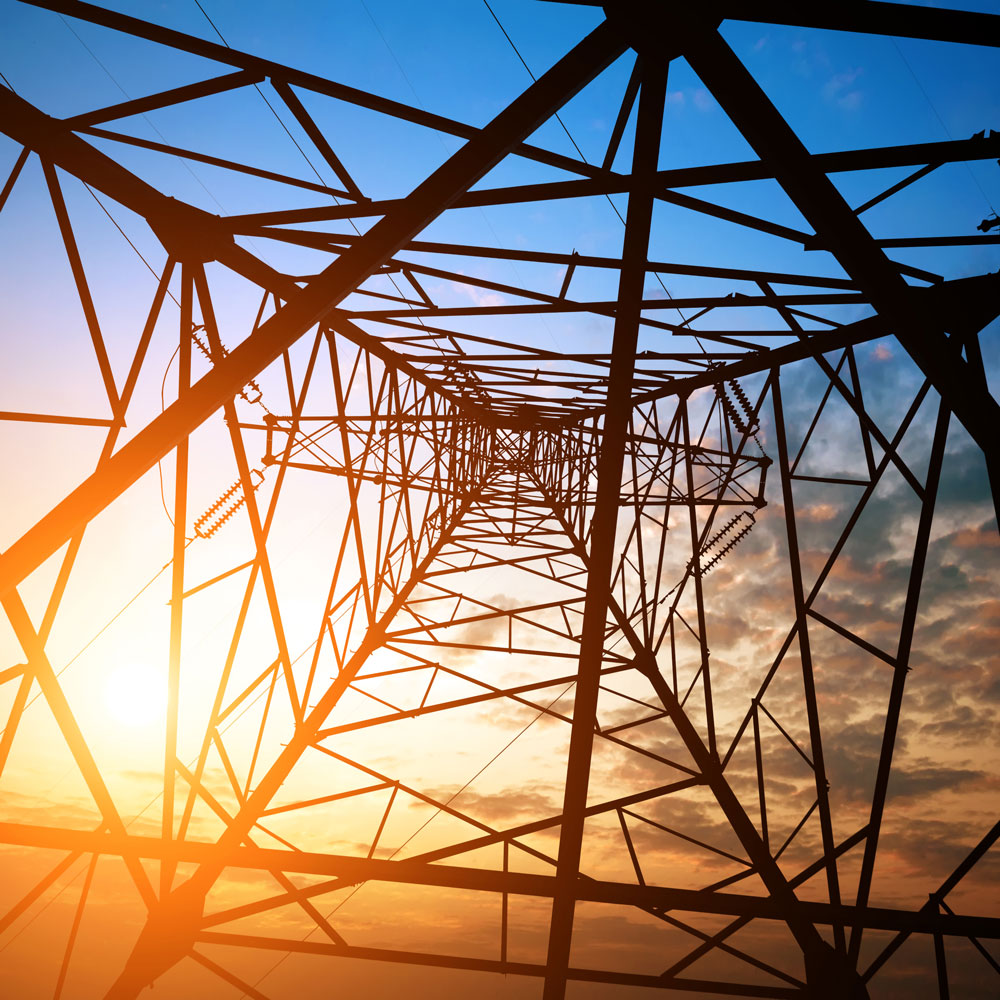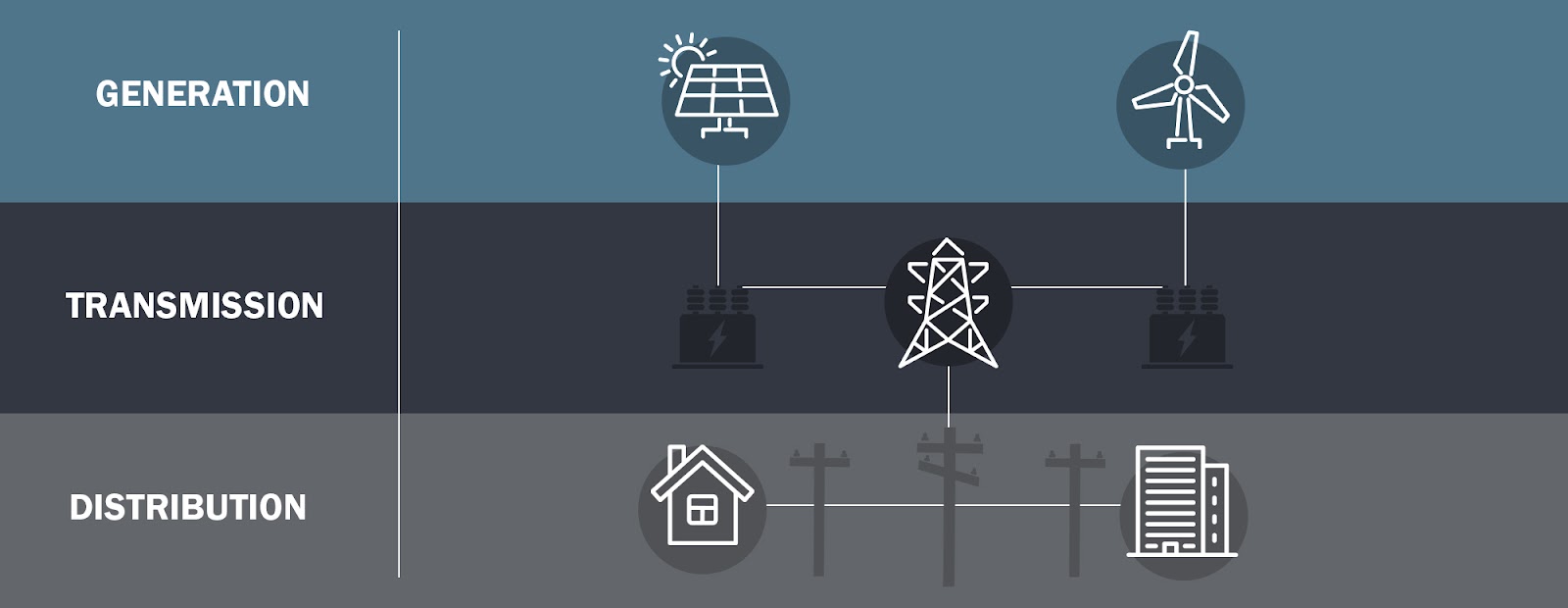A growing number of states have passed legislation that places distribution system planning under the purview of regulatory commissions, providing opportunities for WRA to engage in the rulemaking and planning processes.
In Colorado, Senate Bill 19-236 required the Colorado Public Utilities Commission to develop rules for distribution system planning, and the commission plans to finalize those rules in fall 2021. In Nevada, Senate Bill 146, passed in 2017, required large utilities to submit a Distributed Resources Plan as part of their triennial integrated resource plans. NV Energy filed its second Distributed Resources Plan in June 2021.

What is Distribution System Planning?
Distribution system planning is the process electric utilities use to determine appropriate investments in the infrastructure that delivers power to individual homes and businesses. As the energy industry changes, distribution system planning must modernize, as well.
To ensure reliable service for customers, utilities regularly assess their distribution systems and determine whether any modifications, upgrades, or additions are necessary. As part of this distribution system planning process, the utilities create forecasts to understand and assess new demands and stresses on the distribution system. If electricity demand is expected to increase in a particular area, a utility may determine that existing infrastructure is inadequate to serve the new load. Traditionally, utilities would then add or upgrade infrastructure—such as a new substation or more transformers—to accommodate the growing demand for power.

The three main components of the electric power grid.
- Generation: production of energy.
- Transmission: delivery of power over long distances.
- Distribution: delivery of power locally.
Distribution System Planning is Becoming Increasingly Regulated
Utilities have historically completed their distribution system planning internally, with limited — if any — regulatory oversight. These investments in grid improvements were considered essential for utilities to meet the obligation of providing service to customers, and utilities could then earn an approved rate of return to recover the costs of capital investments. In the past several years, however, some states — such as Nevada and Colorado — have passed legislation that creates a more active role for regulators and stakeholders in assessing the evolving needs of the distribution grid and determining the best path forward.
Regulated Distribution System Planning to Addressing Climate Change
Today, there are more ways to resolve distribution grid constraints than simply adding more infrastructure. In some cases, solar panels or other forms of distributed generation, energy storage, energy efficiency, and other energy management strategies could help avoid or defer the need for new distribution system infrastructure. These customer-based approaches — called non-wires alternatives —offer customer and environmental benefits and may cost less.
Unfortunately, the traditional utility business model does not create any incentive for utilities to pursue non-wires alternatives, since utilities earn returns by investing in capital projects and do not have the same financial incentive to pursue projects that avoid infrastructure. But transparent and regulated distribution system planning can help ensure investments are chosen based on their total net benefits, including reductions in the fossil fuel emissions that cause climate change.
Consumers have a growing interest in owning solar and energy storage technologies. However, utilities are typically disinclined to support customer-owned solar, because those customers will purchase less electricity from their utility, thereby reducing utility revenues. In addition, utilities do face real challenges in connecting these systems to the grid, since the grid was not designed to accommodate significant amounts of customer-owned solar in unplanned locations. Transparent and regulated distribution system planning can balance the interests of both utilities and distributed solar customers, to ensure that utilities are giving fair opportunity to distributed solar while also preventing any adverse impacts from expanding distributed generation.
Transparent and regulated distribution system planning can balance the interests of both utilities and distributed solar customers, to ensure that utilities are giving fair opportunity to distributed solar while also preventing any adverse impacts from expanding distributed generation.
As we move away from using fossil fuels in buildings, industry, and vehicles, the distribution grid will also face increasing electricity demand. To accommodate this growing demand, we will likely need additional distribution grid infrastructure. But customer-based approaches — such as energy efficiency, solar, storage, and energy management techniques — may help avoid or defer certain infrastructure investments while delivering fossil fuel emission reductions and customer benefits.
The reality of climate change also creates new challenges to the distribution grid. The impacts of climate change, including intense wildfires, severe weather, and extreme heat waves place new stresses on the physical infrastructure that makes up the distribution grid. Distribution system planning processes provide an opportunity for regulators, utilities, and stakeholders to evaluate these new challenges and explore solutions to improve resiliency and reliability of the distribution grid in the face of a changing climate.
Hear from WRA’s Flexible Grid Analyst Clare Valentine as she breaks down “Smart Meters” with Signal Tech Coalition:
WRA Advocates for the Following Distribution System Planning Policies
WRA supports legislation that modernizes distribution system planning and improves transparency by establishing a public distribution system planning process. In regions where distribution system planning is overseen by a regulatory commission, WRA can intervene in distribution system planning proceedings and advocate for:
Preparing the distribution system for building and transportation electrification.
WRA can review utilities’ forecasts of new electricity demand from electrification efforts within the distribution system planning process. If the utilities are not sufficiently accounting for expected levels of building and transportation electrification that align with state and local policy goals or targets, then WRA can advocate for revisions to help ensure the grid is ready for increasing numbers of electric vehicles and growing demand from greater use of electricity for heating, cooling, and cooking in homes and buildings. Our work to advance zero-carbon, electric transportation and buildings depends on a distribution grid that’s up to the challenge.
Using distributed alternatives that provide emissions reduction benefits, in addition to resolving a grid constraint.
While the grid may need additional infrastructure to support the increase in loads as demand for electricity increases, WRA may also be able to identify opportunities to reduce, defer, or eliminate the need for utilities to make expensive capital investments, through the use of alternatives like optimizing or expanding use of distributed energy resources that can provide benefits for customers, including reductions in harmful fossil fuel pollution. Specifically, utilities may be able to:
Use energy efficiency to reduce peak load in a geographically targeted area, avoiding an upgrade to the infrastructure serving that neighborhood. In this case, the utility also avoids additional electricity generation, which reduces carbon emissions in generation systems that rely on fossil fuels.
- Manage grid constraints by offering incentives that encourage customers to alter their power consumption in ways that allow the utility to better match the demand for power with the supply. This can help utilities avoid or reduce the use of fossil-fuel gas peaker plants, minimizing greenhouse gas pollution.
- Tap into customers’ distributed solar generation resources to meet new power demands in a specific area, thereby avoiding upgrades to the distribution system that would otherwise be necessary. The use of renewable energy then directly displaces the use of energy from utility-owned electricity generation sources that may not be carbon-free.
Supporting demand flexibility through greater use of distributed resources, to better ensure electric grid reliability.
As we move toward greater use of intermittent renewable resources for electricity generation, it becomes more challenging to match power supply and demand in real time. Utilities need new ways to integrate customer demand and distributed resources, rather than solely relying on controlling the utility’s supply-side generation resources to match demand. Distribution system planning is one arena where this integration may be developed, through the use of smart meters, energy storage, and grid-interactive technologies. Demand flexibility also will be a powerful tool in ensuring reliability and avoiding the use of climate polluting fossil-fuel peaker plants during times of high demand. WRA advocates for the development of pilots and programs that increase demand flexibility on the grid.
Improving the ease of installing distributed generation.
Distribution system planning usually includes an assessment of how much distributed generation — like rooftop solar — can be connected into the grid before upgrades are required. Access to this information helps developers identify the optimal grid locations for solar generation, reducing barriers to completing installations. By supporting transparent sharing of this useful information, WRA helps facilitate the use of distributed solar to displace utility-owned generation that may come from fossil-fuel sources.

